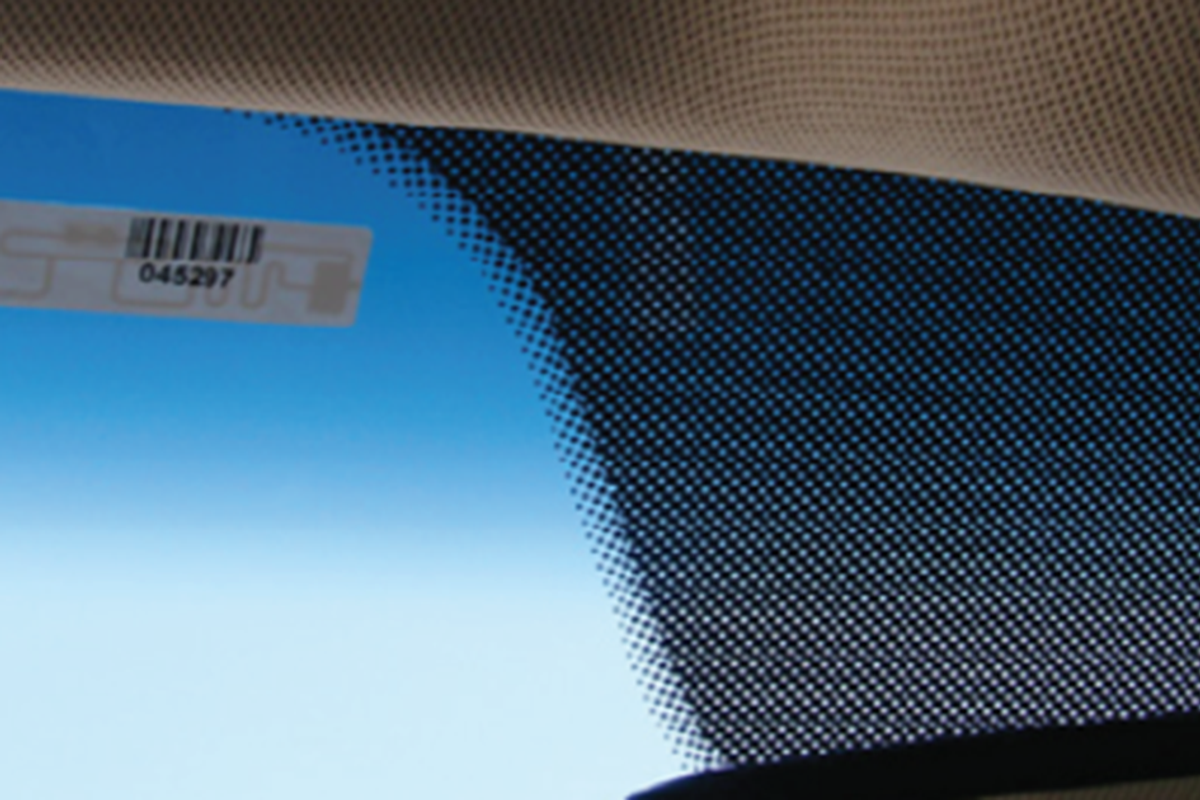What are the small black dots on your windshield? They don't look important, but they are.
Admit it, you've always wondered what they're for.

What are those small black dots?
You’ve probably noticed that every car you’ve ever had—unless you got your license in the ’50s—has had small black dots on the bottom of the windshield. They appear to be meaningless decorations or some kind of dot-matrix-style graphics but they have a very important job that keeps you safe and the windshield attached to the body of your car.
Windshields were originally held in place by metal trim that secured them to the car’s body. In the '50s and '60s, manufacturers transitioned to using an ultrastrong adhesive to keep the window in place.
That’s why, if you’ve ever had to have your window replaced, it’s a pretty simple process. All it takes is for the old adhesive to be removed so the old window can be popped out. Then, the new adhesive is applied and the new window is dropped in place in the car’s body.
\u201cTRAVEL INFLUENCER \ud83d\udd35 The Real Reason Your Car Windshield Has Those Small Black Dots https://t.co/Icf90Oq7ba Econ L Pensikkala - Follow us \ud83d\udcec\u201d— Searching Tours Tickets & Activities? Tour Insider (@Searching Tours Tickets & Activities? Tour Insider) 1654430287
To keep the unappealing adhesive hidden around the edges of the windows, manufacturers created black dots from ceramic paint known as “frits.”
The dots are baked into the window to make an aesthetically pleasing transition from the thick black line that obscures the adhesive to the rest of the window. They are positioned in a halftone pattern so they get smaller as they recede from the black tinted area that hides the adhesive.
This gives the appearance that the black area is slowly fading into the clear windshield.
"This makes the windshield a structural component of the vehicle's body," Richard Reina, product training director for CarID.com, said according to Travel and Leisure. "The frit is black painted enamel that's baked onto the surface of the glass, and it provides a secure point of contact between the glass, urethane adhesive, and windshield frame."
\u201cDid you know the black dots around your windshield are called frits? They actually help the window "stick" better. Who knew?\u201d— Capital Auto Glass (@Capital Auto Glass) 1641233647
The frits also play a role in manufacturing the window. They provide temperature control when the glass is being heated. The black painted glass heats up faster than the rest of the glass and the frits evenly distribute the heat to prevent unnecessary warping.
Craig Campbell, an automotive repair expert and founder and CEO at Auto Parts Guideline, says the only thing you should worry about is if the frits appear to wear off.
"This is because the adhesive is what keeps the glass in place," Campbell said according to Travel and Leisure. "Without it, the glass could become loose and fall out of the frame. While this is unlikely to happen, it's still something that you should be aware of. If you're unsure of how to replace the dots, you can always take your car to a professional for help."
Now the next time you’re at a party you can wow everyone with your incredible knowledge of car windshields. If that information goes over well, you can let everybody know what that handle is for on the roof of your car.
Some folks think it’s for holding on to when the driver gets a little crazy. In reality, it’s for helping people get in and out of the vehicle.
- 15 times everyday folks went above and beyond for others for no ... ›
- 24 valuable lessons that people learned late in life ›

